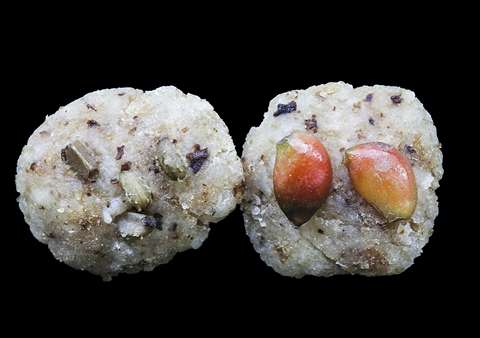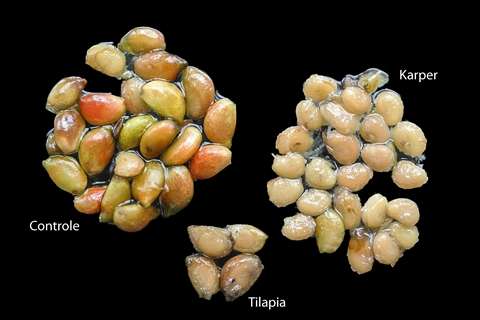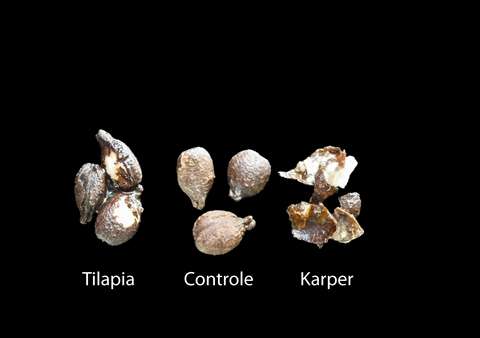Fish play a role in seed dispersal over large distances

Fish can play a role in seed dispersal over large distances. Heavy seeds in particular pass undamaged through the mouths and intestines of fish and may end up being dispersed for miles, both in an upstream and downstream direction. As a consequence, reintroduction of water plants into newly created nature may not be necessary. Freshwater Biology has published a study by ecologists and fish experts from Radboud University and Wageningen University .
It began in 2007 with a project conducted by two pupils in pre-university secondary education. Led by their biology teacher Ger Boedeltje, they demonstrated that some fish can help disperse seed. The scientific literature available on this topic was limited to a small number of plant species, making it difficult to generalise. When Boedeltje retired he gained time to fill this gap. 'I love investigating,' he explains. 'Some people go on a journey round the world, I prefer to go on a journey of discovery.'
36,400 seeds
As a plant ecologist, Boedeltje sought collaboration with fish experts and animal ecologist Wilco Verberk from Radboud University. 'We want to explain patterns in ecology. For this you need to know which characteristics of seeds are important for their dispersal. Such a general understanding allows us to predict how well seeds of other plant will be dispersed based on their characteristics.'

Boedeltje collected 36,400 seeds from nineteen wild plant varieties that are either water plants or grow along the water's edge. In order to ensure that the fish ate the seeds in the same quantities, they were rolled into small dough balls (at home, at the kitchen table). Two large seeds or a few small ones were in each ball.
Fish laboratory
These were fed to the carps and tilapia in Radboud University's fish laboratory. These two types of fish have very different digestive systems. Carps have sizeable molars in their throats allowing themt o grind up food. In contrast, tilapia has rows of small sharp teeth and they chemically digest their food by having an acidic stomach. Tilapia and carps are present in fresh water worldwide and can therefore contribute to the distribution of aquatic and riparian plants.
Faeces
The faeces was collected after 28 hours. Did the fish swallow the seeds and then excrete them out again? And if so, were they still capable of germinating? Adult carps were capable of crushing and digesting almost all seeds. Hard seeds (such as pondweed) best survived being eaten by the carp. But the few soft seeds that were excreted undamaged by the fish proved to be the most capable of germinating. The tilapia ate fewer seeds than the carps but more of the seeds they excreted were still viable.

More information: "Effects of seed traits on the potential for seed dispersal by fish with contrasting modes of feeding." Freshwater Biology. doi: 10.1111/fwb.12550
Provided by Radboud University




















